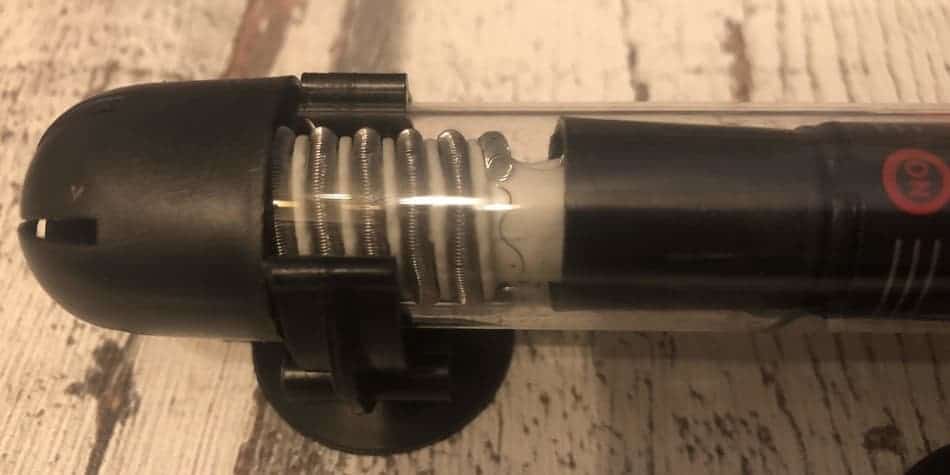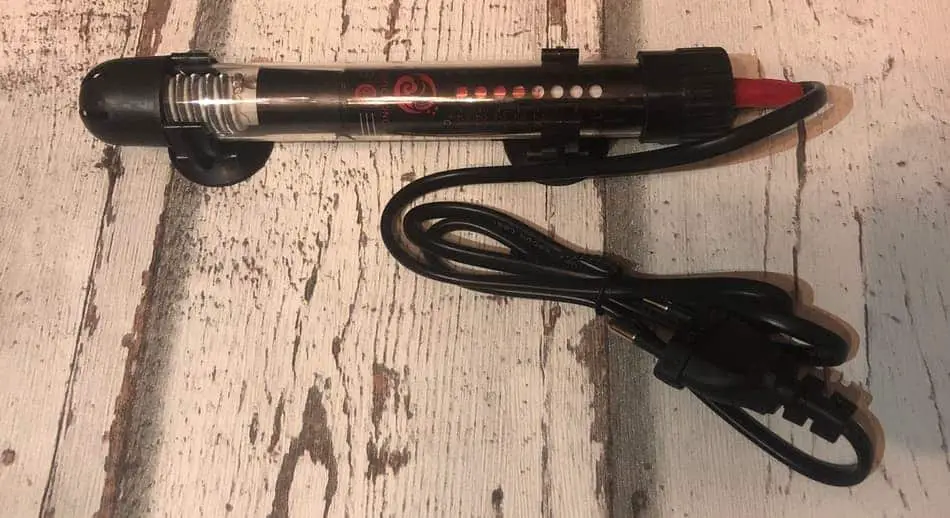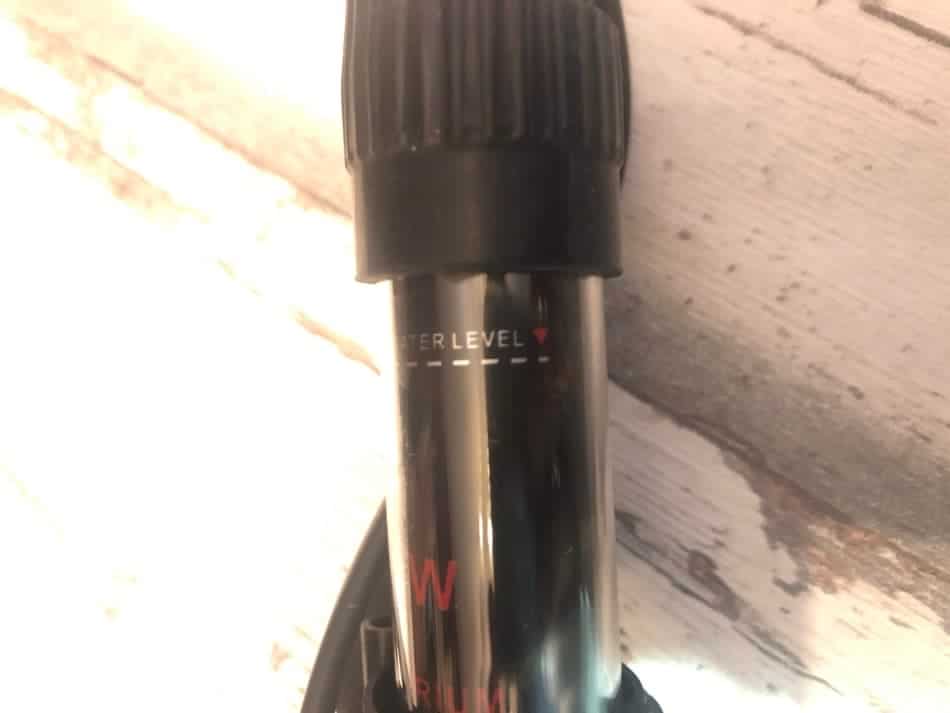Aquarium heaters are almost always recommended gear by fish stores when you start your aquarium hobby. But are heaters always necessary in your tank? Let’s take a look at when a heater is needed and when it’s not.
Do you need a heater in your shrimp tank? If you can maintain a relatively stable temperature in your room, you don’t need a heater in your shrimp tank. The temperature must be at least 62°F/16°C for most Caridina and Neocaridina shrimp. When breeding shrimp, a heater can be a helpful tool.
The main question you must answer first when considering a heater in your aquarium is: what is the room temperature where your aquarium is and does it fluctuate?
What temperature do shrimp live in, is your room warm enough?
Let’s take a look at what temperature you can keep most dwarf shrimp. Ghost shrimp, Caridina and Neocaridina shrimp, have a wide range in which they can live. Caridina can live from as low as 62°F / 16°C to as high as 76°F / 25C. Neoaridina can live from as low as 57°F / 14°C to as high as 84°F / 29C. Most rooms in your house will usually be warm enough for them. For them, you don’t need a heater.
A heater might be necessary for some of the more challenging to hold shrimp. Shrimp like the Sulawesi shrimp, for example, require a high temperature, 78-88°F / 26–31°C, to survive and thrive.
What temperature do dwarf shrimp need?
| Shrimp species | Temperature range | Recommended temperature |
| Neocaridina shrimp | 57-84°F / 14-29°C | 72°F / 22°C |
| Caridina shrimp | 62-76°F / 16-25°C | 72°F / 22°C |
| Sulawesi shrimp | 78-88°F / 26–31°C | 82°F / 28°C |
| Ghost shrimp | 65-85°F / 18-29°C | 74°F / 23°C |
| Vampire shrimp | 75-85°F / 24-30°C | 81°F / 27°C |
Are you able to keep a relatively stable temperature in your room?
In the wild, the water temperature will vary a few degrees with the seasons, often even between day and night. Shrimp have a temperature range in which they can live, a fluctuation of a few degrees now and then shouldn’t be a problem for them, but they don’t like big changes.
A significant difference in temperature can have dire consequences for your little shrimp.
What are your goals for your aquarium?
Community tank
If you are planning to breed shrimp, it can help to keep them at a higher temperature. Shrimp are coldblooded animals, and if you raise the temperature, their metabolism is faster. If their metabolism is faster, they will breed faster. The downside to this is, their lifespan will be shorter.
For example, if you want to keep your aquarium at the high-temperature range for cherry shrimp, 76°F/25C, a heater is required. Or raise the room temperature is you have multiple tanks.
Breeding shrimp for fun and profit
If you are planning to breed shrimp, it can help to keep them at a higher temperature. Shrimp are coldblooded animals, and if you raise the temperature, their metabolism is faster. If their metabolism is faster, they will breed faster. The downside to this is, their lifespan will be shorter.
For example, if you want to keep your aquarium at the high-temperature range for cherry shrimp, 76°F/25C, a heater is required. Or raise the room temperature. If you have multiple tanks, this can be a viable option.

Are aquarium heaters dangerous?
Heaters can be dangerous to your fish and shrimp, especially if they brake. Most of the time, it’s not a question if they break down, but when. A heater’s exterior can crack or develop a leak, and then you can have a short circuit in your aquarium. Your shrimp and fish might get electrocuted.
Another thing that can break is the thermostat. If the thermostat breaks, two things can happen, either it won’t heat anymore, or it won’t stop heating the water until it becomes too hot for your little creatures.
Not all breakdowns end in tragedy. In the years I’ve had my aquaria I’ve had my share of broken thermostats, and leaking heaters. Luckily, so far, I’ve never had any deaths because of it. Still, no guarantees it won’t happen someday.
What are the advantages of having a heater in your aquarium?
- Stability
Heaters can maintain a stable temperature in your tank.
- High temperature
With a heater, you can keep fish and shrimp that require high temperatures to survive.
- Temperature change
Some species require a period of colder or warmer temperature to mimic seasons and stimulate breeding. A heater can be a helpful tool for this.
What are the disadvantages of having a heater in your aquarium?
- Aesthetics
A heater is an extra piece of equipment in your aquarium. It can take up valuable space in your tank. You might not like the look of a heater, distracting you from your aquascape.
- Heaters can break down
Heaters, like any other equipment, can break down, due to wear or accidents. It can be dangerous when a heater breaks down; there is a chance your livestock will die.
- Economics
If you have multiple tanks, it can be more economical to keep the room at a stable temperature compared to the cost of numerous heaters and the power they require.
What kind of heaters are there?
If you need a heater, there are different types from which you can choose. The most common options are the submersible heater, the immersible heater, the substrate or bottom heater, and the filter heater.

- Submersible and Immersible Heaters
The most common heaters you will find are Submersible and Immersible heaters. They usually have a tube of glass, plastic or some noncorrosive metal. Sometimes they can look very similar. There is a big difference between the submersible heaters and the immersible heaters.
A submersible heater is completely waterproof compared to an immersible heater. You can’t fully submerge an immersible heater because of the controls on top.
You must keep the controls of an immersible heater above the waterline. That is also the reason why you always have to fit an Immersible heater vertically.
You can find a mark to indicate the waterline on an Immersible heater.

A submersible heater, on the other hand, you can also install horizontally.
The main advantage of these types of heaters is: easy to install, easy to adjust, and usually the least expensive type of heater.
- Substrate Heaters
Substrate heaters are heaters that you can burry underneath the substrate of your aquarium.
The main advantage of this heater is, they are entirely out of sight.
The most significant disadvantage of the substrate heaters, on the other hand, is, you can’t reach them if you need to adjust them or if there is a problem. If you need to get to your heater, you will have to dismantle a large part of your tank.
- Filter Heaters
Filter heaters are a type of submersible heater you can install in an external filter.
The filter heater combines the advantage of a substrate heater when it comes to aesthetics, and the ease of access the immersible heater has.
Conclusion
There are many reasons to have a heater in your aquarium and a lot not to have one. At the moment I don’t use heaters in my tanks, but I monitor them and the room to make sure they don’t cool off too much in winter or heat up in summer.
Related questions
Can aquarium heaters touch gravel? It is a good idea not to let a glass-encased heaters rest on the gravel substrate of your tank. Metal-encased heaters are less vulnerable and don’t have a chance to break when they rest on the gravel.
Can aquarium heaters be fully submerged? There are different kinds of aquarium heaters; submersible heaters you can fully submerge in your aquarium. If you are in doubt, it will say so on the packaging.
